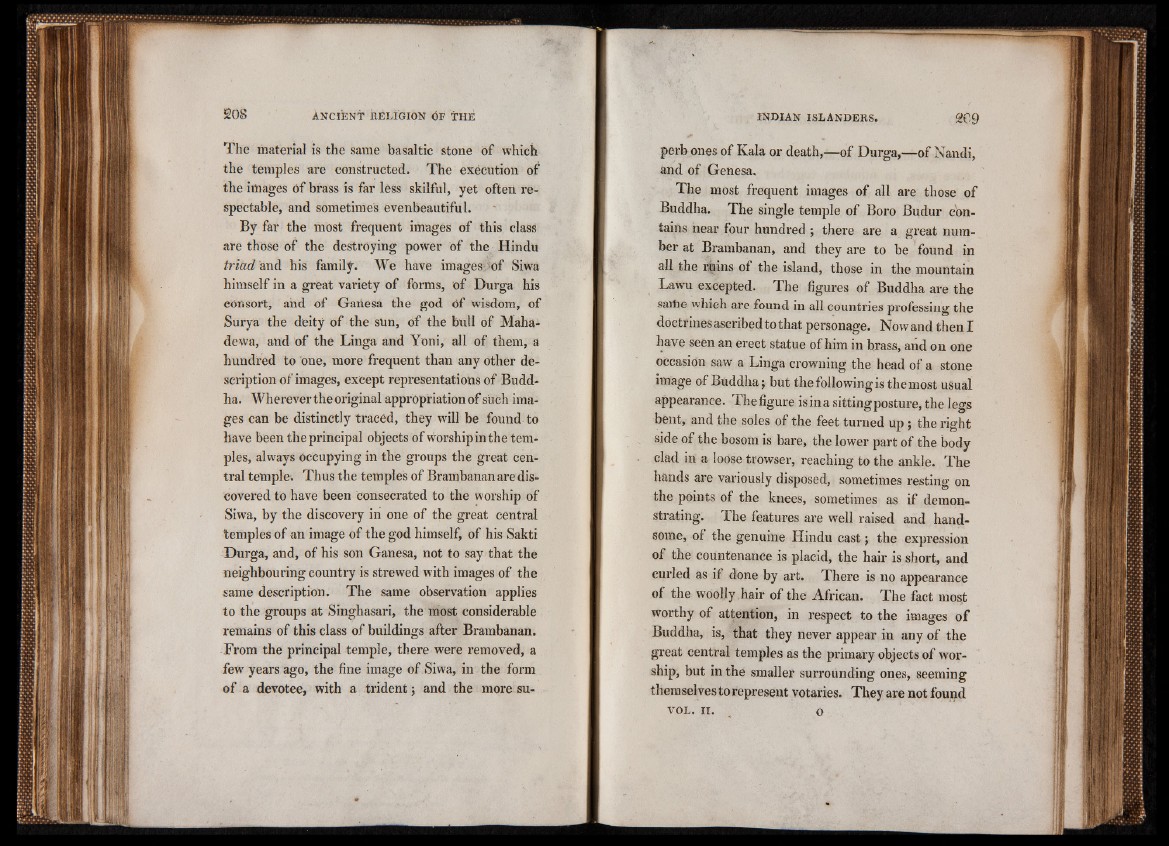
The material is the same basaltic stone of which
the temples are constructed. The exécution of1
the images of brass is far less skilful, yet often respectable,
and sometimes evenbeautiful.
By far the most frequent images of this class
are those of the destroying power of the Hindu
triad and his family. We have images Jof Siwa
himself in a great variety of forms, of Durga his
consort, and of Gariesa the god of wisdom, of
Surya the deity of the sun, of the bull of Maha-
dewa, and of thé Linga and Yoni, all of them, a
hundred to one, more frequent than any other description
of images, except representations of Buddha.
Wherever the original appropriation of such images
can be distinctly tracéd, they will be found to
have been the principal objects of worship in the temples,
always occupying in thé groups the great central
temple. Thus the temples of Brambanan are discovered
to have been consecrated to the worship of
Siwa, by the discovery in one of the great central
temples of an image of the god himself, of his Sakti
Durga, and, of his son Ganesa, not to say that the
neighbouring country is strewed with images of the
same description. The same observation applies
to the groups at Singhasari, the most considerable
remains of this class of buildings after Brambanan.
From the principal temple, there were removed, a
few years ago, the fine image of Siwa, in the form
of a devotee, with a trident ; and the more superb
ones of Kala or death,—of Durga,—of Nandi,
and of Genesa.
The most frequent images of all are those of
Buddha. The single temple of Boro Budur contains
hear four hundred ; there are a great number
at Brambanan, and they are to be found in
all the ruins of the island, those in the mountain
Lawu excepted. The figures of Buddha are the
saihe which are found in all countries professing the
doctrines ascribed to that personage. Now and then I
have seen an erect statue of him in brass, and on one
occasion saw a Linga crowning the head of a stone
image of Buddha 5 but the following is the most usual
appearance. The figure is in a sitting posture, the legs
bent, and the soles of the feet turned up ; the right
side of the bosom is bare, the lower part of the body
clad in a loose trowser, reaching to the ankle. The
hands are variously disposed, sometimes resting on
the points of the knees, sometimes as if demonstrating.
The features are well raised and handsome,
of the genuine Hindu cast j the expression
of the countenance is placid, the hair is short, and
curled as if done by art. There is no appearance
of the woolly hair of the African. The fact most
worthy of attention, in respect to the images of
Buddha, is, that they never appear in any of the
great central temples as the primary objects of worship,
but in the smaller surrounding ones, seeming
themselvestorepresent votaries. They are not found
VOL. I I. o